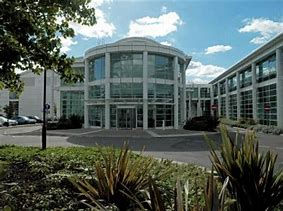

Background
The National Physical Laboratory (NPL) is based in Teddington, Middlesex. It houses some of the world’s most sophisticated measurement science laboratories. NPL maintains a wide portfolio of internationally visible research programmes that advances measurement science and underpins the SI system.
Work carried out at the NPL is based on over one hundred years of scientific research, and the laboratory’s clients include educational establishments, government and the private sector.
The NPL occupies a building of 36,000m2 with over 380 laboratories, as well as administration offices, write-up rooms, workshops, an auditorium and a restaurant. The building consists of three rectangular blocks linked by bridges. There are also other buildings on the site.
The NPL poses many challenges for building services. Many of its laboratories require temperature control at +- 0.5K and humidity control at +-5% over prolonged periods. Some experiments are light-sensitive. Many of the studies conducted at the NPL run for several years, and any change in conditions must be tracked and recorded carefully during that time for accreditation purposes.
Key facts
The building management system (BMS) of the NPL was upgraded in 2014 to a Honeywell Hawk system. The aim was to ensure that the system could be maintained in the long-term, and also to support the NPL's energy management strategy. This is a highly integrated BMS, which is vital for the type of work carried out in the NPL buildings.
The NPL has been keen to ensure that it can track and control energy use, with a particular emphasis on lighting. In 2014 the NPL began a programme to convert all luminaires to LED. This not only reduces the energy required for lighting, but also enables better control.
The lighting control system was installed by Intelligent Building Automation (IBAL) of Maidstone across the whole of the NPL main building. IBAL has put in place a DALISmartLink lighting control system which is based on Tridium's Niagara framework. This is an open protocol which integrates seamlessly with BMS protocols such as BACnet.
The lighting control installation at the NPL includes 24 JACEs and 270 DALI masters. There are 10,000 devices on the network, which also includes PIRs known as M-Sensors.
Main features
DALISmartLink is a range of hardware and software that allows system integrators such as IBAL to develop and complete lighting control applications from within the BMS, rather than installing a separate lighting control system.
Mark Smith, technical director at IBAL, says: "The key feature of DALISmartLink is that because it is based on the Niagara platform, it is simple to integrate between lighting and the BMS. You don't need external programmers to do the work because it can all be done on a single system."
At the NPL the LED lighting can be controlled through the BMS system which includes the time clocks and motion sensors. The NPL facilities team has been able to make use of simple but effective energy saving measures such as an 'auto-off' feature for the lighting which prevents lights staying on when they are no longer required.
DALISmartLink also offers a fall-back facility whereby lighting control continues to work even if the BMS is offline. It also offers automated emergency light testing with email and SMS reporting, compliant with BS EN50172:2014.
Main benefits
For the NPL, the installation of a Niagara-based lighting control system has many benefits. DALISmartLink has been installed by BMS integration experts IBAL, who understand the importance of BMS integration. By linking to the BMS, it is also possible for the NPL facilities team to gather data on the performance of lighting around the site which is vital information for many of the scientists and engineers working there.
The lighting control system installed by IBAL also automates the testing of emergency lighting so that it does not have to be carried out manually. In a facility the size of the NPL this would be an enormously time-consuming task without the benefit of automation. Also, the emergency lighting can be tested out of hours, reducing disruption for occupants.
What's more, the DALISmartLink fall-back functionality offers the client confidence in the system.
"If the JACE goes offline, the lights will still operate," says Mark Smith. "This is enormously important for the NPL because some experiments are light-sensitive. It also means that any updates to JACE software can be made with minimum disruption to the building users."
Overall, the Niagara-based lighting control system has provided the NPL with a robust, energy efficient and operationally effective way to monitor and manage lighting in this particularly sensitive working environment.



